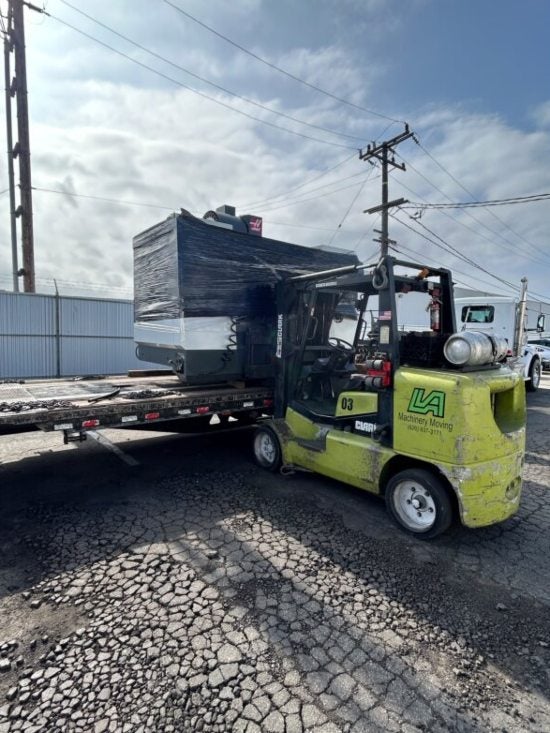Hygiene & Medical Equipment Relocation
Hospitals, research clinics, and testing laboratories must sometimes transport oversized machinery within the same building or to a new facility. This complex process demands expertise and attention to detail. Working with a professional medical equipment transportation service ensures your critical devices are relocated safely, quickly, and in compliance with healthcare standards. Whether you’re moving a single piece, or an entire department, proper planning and specialized handling are essential for a successful move.

Challenges in Medical Equipment Relocation
Medical equipment transportation poses several unique challenges. Each must be addressed to ensure a safe, efficient move without damaging the equipment or disrupting patient care.
Equipment Safety
Medical devices are often expensive and fragile. They require careful handling to prevent damage during transport. Each piece must be secured using custom crates or skids and cushioned to withstand vibrations and shocks that may occur during loading, unloading, and transportation.
Minimizing Downtime
In the medical industry, downtime can negatively impact patient care and hospital operations. A crucial part of moving medical equipment is to reduce the time that equipment is out of use. Careful coordination and pre-planning ensure the transition goes as smoothly and quickly as possible.
Adherence to Healthcare Rules
Medical equipment transportation must follow strict healthcare regulations, including sterilization standards and hazardous materials guidelines. Working with an experienced medical equipment transportation company ensures that all legal and safety requirements are met.
Custom Packaging
When moving medical equipment, one size doesn’t fit all. Different devices require unique packaging, such as moisture-proof bagging, anti-static materials, or cushioning. These solutions protect sensitive electronics and prevent environmental factors like dust, moisture, and vibrations from affecting the equipment during transport.
Commonly Transported Medical Equipment
Medical equipment transportation solutions are available for a wide range of devices. Here are some of the most commonly transported items:
CT scanners are large, fragile machines requiring careful dismantling and packaging before transportation. Their size and sensitivity make them challenging to move, necessitating a partnership with experienced medical equipment movers.
MRI machines are bulky and sensitive to movement. They also contain powerful magnets that must be properly handled to avoid damage during relocation.
X-ray devices are another example of large, sensitive equipment that demands precise handling and transportation.
Diagnostic equipment like ultrasound machines and ECG units may need to be relocated during hospital renovations or layout reconfigurations. Careful transport reduces the risk of damage to sensitive components.
Lab equipment, such as microscopes and incubators, often contain delicate parts that can be easily damaged by improper handling or environmental exposure. They require custom crating and packaging.
Lasers used in various medical procedures are delicate and expensive. They must be secured with vibration protection during transport.
Surgical instruments are often made of specialized materials and must be kept sterile throughout the relocation process. Custom crating and moisture-proof packaging are frequently used to protect these items.
Hospital furniture isn’t as delicate as medical equipment, but hospital beds, stretchers, and medical carts should be securely packed and transported to avoid damage.
Steps for Transporting Medical Equipment
Successful hospital & medical equipment transportation requires a clear, step-by-step process. Follow these best practices to ensure each piece of equipment is moved efficiently and safely.
Planning
First, create a detailed plan for the move. This includes evaluating the equipment to be relocated, identifying the need for custom crating or climate control, and setting a timeline that minimizes downtime for your medical facility.
Dismantling
Large medical devices, such as MRI machines or CT scanners, must often be partially dismantled before transport. This requires a team of experts who understand the equipment they’re working with to avoid causing damage.
Loading
Proper loading techniques are crucial to ensure equipment safety during transport. Machinery should be loaded using specialized lifts and secured with straps, cushioning, and bracing to prevent movement.
Transportation
This phase calls for moving the machinery with suitable transportation equipment, such as cranes, trucks, trailers, or climate-controlled vans, depending on the requirements of what’s being relocated. For instance, some machines need temperature or humidity regulation to maintain their integrity, while this precaution is unnecessary in other cases.
Reassembly
Once the equipment reaches its destination, it must be reassembled and tested to ensure proper functionality. This process should be handled by trained professionals who understand the equipment’s technical specifications.
Trust Us for Medical Equipment Relocation in Los Angeles
LA Machinery Moving specializes in relocating medical equipment, drawing from over 30 years of industry experience. Our knowledgeable team ensures secure and efficient transport for sensitive medical devices. We offer personalized services that span the entire transportation process for minimal downtime and complete safety. Contact us today to request a quote for medical equipment transportation services in Los Angeles, CA.
